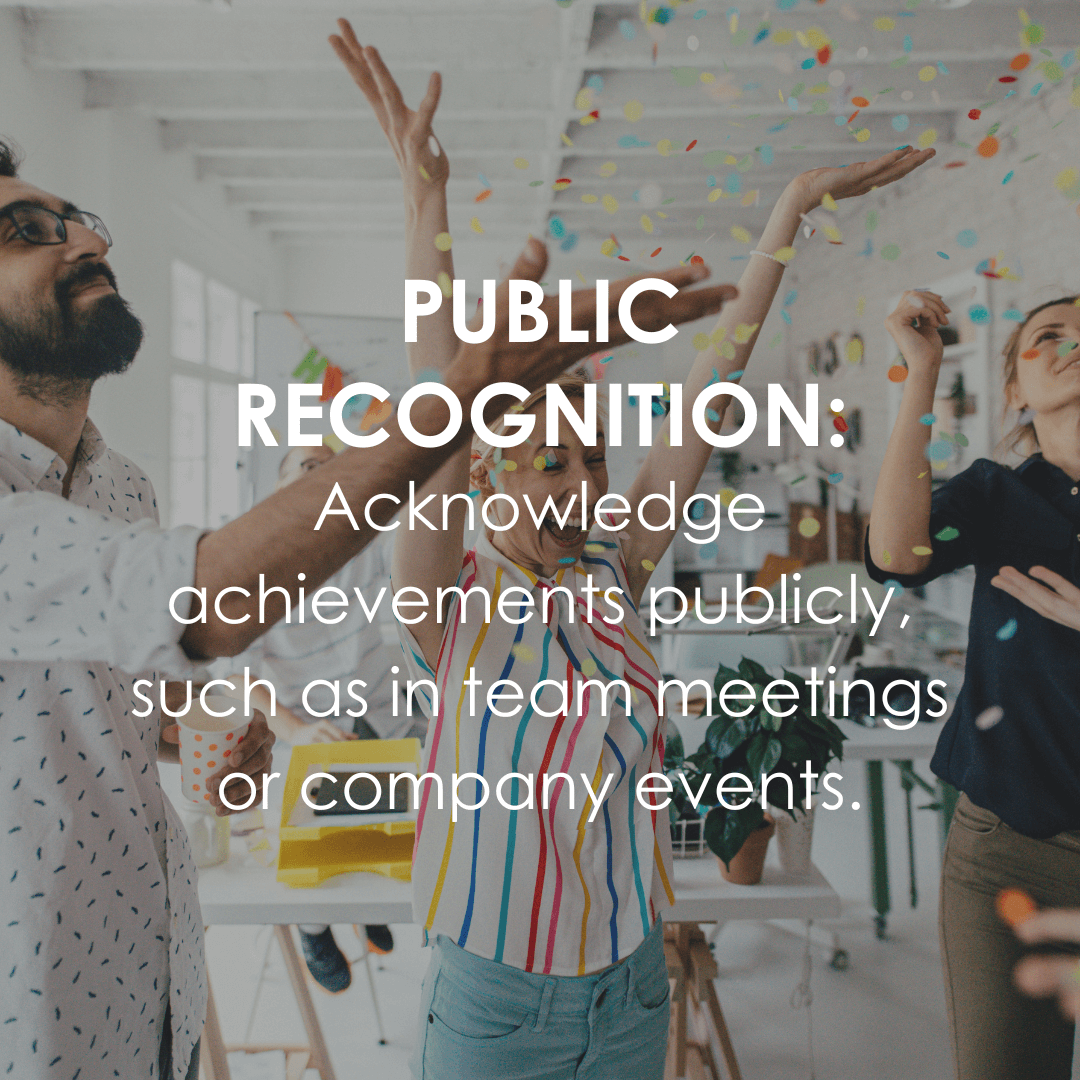Are you ready to transform your leadership and elevate your team’s success?
In today’s competitive business landscape, retaining top talent and fostering a thriving company culture is essential. Having the right leadership qualities plays a pivotal role in achieving these goals.
You can inspire, motivate, and empower your team to reach their full potential by cultivating specific leadership qualities. This article will explore four key leadership qualities that can significantly impact your business’s success.
Discover how to:
Motivate and inspire your team through recognition and rewards
Cultivate a growth mindset and encourage professional development
Build trust and understanding through effective communication
Create a supportive culture that prioritises well-being and work-life balance.
Are you ready to take your leadership to the next level? Let’s dive in!
What is Your Leadership Style?

Before diving into the four essential leadership qualities, explore six common leadership styles to identify which resonates most with you.
Autocratic Leadership
Autocratic leaders are decisive and confident, often taking control of situations promptly and efficiently. This direct approach can be especially valuable during crises or when clear guidance is necessary. However, to create a positive and productive work environment, autocratic leaders should also consider incorporating democratic elements, such as seeking input from their team members and fostering collaboration.
Visionary Leadership
Visionary leaders possess a unique ability to envision a compelling future and inspire their teams to strive towards that goal. By connecting everyday tasks to a broader purpose, they create a sense of meaning and belonging among their team members. This approach thrives in dynamic environments that embrace innovation and change.
Affiliative Leadership
Affiliative leaders prioritise building strong relationships and cultivating a positive work atmosphere. They understand the importance of their team members’ emotional well-being, believing that a happy and engaged team is more likely to achieve success. Affiliative leaders possess empathy, a commitment to harmony, exceptional interpersonal skills, and a strong sense of teamwork.
Democratic Leadership
Democratic leaders value input from their team members and encourage open communication. This inclusive approach fosters a sense of ownership and collaboration among employees. If you enjoy seeking feedback and working together with others, you may identify with the democratic leadership style. You can stimulate creative thinking and enhance job satisfaction by prioritising team input.
Pace-setting Leader
Pace-setting leaders are driven to set ambitious goals and inspire their teams to achieve exceptional results. With their infectious energy and enthusiasm, they motivate others to strive for excellence. By pushing their teams to go beyond their limits, pace-setting leaders encourage personal growth and professional development.
Transformational Leadership
Transformational leaders inspire and motivate others. With a clear vision for the future, they can rally their teams around shared goals and create a sense of excitement and purpose. If you find fulfilment in being a visionary who genuinely cares about your team’s growth and success, you may resonate with transformational leadership.
Effective leadership often requires a flexible approach, adapting to different situations and individuals. For example, new employees may benefit from a more structured and supportive leadership style, while experienced employees may respond well to a visionary approach that inspires and motivates them.
Leadership Qualities: The Power of Recognition

Recognising your team’s efforts is not merely a kind act; it’s a strategic investment in your business’s success and a hallmark of effective leadership. Imagine a workplace where everyone feels valued and appreciated for their contributions. A place where hard work and dedication are not only acknowledged but celebrated.
Recognition: Go Beyond the Basics
As renowned leadership expert Jacob Morgan emphasises, appreciation is a key driver of job satisfaction. However, effective recognition must be tailored to individual preferences. Some employees may thrive on public acknowledgement, while others may prefer more private appreciation.
To ensure your team feels valued, explore creative ways to recognise their contributions. Remember, meaningful recognition doesn’t always require significant expense. Consider these three approaches:
The Impact of Recognition on Job Satisfaction and Retention
A study by Reward Gateway revealed that nearly half of employees would consider leaving a company that fails to acknowledge their contributions adequately. Companies that prioritise recognition experience a 14% improvement in employee engagement, productivity, and customer service compared to those that do not. Additionally, companies with a recognition culture have a 31% lower employee turnover rate.
Imagine a workplace where every employee feels valued and appreciated. How would this impact your team’s morale and productivity?

Happy Teams Yield Results
Learn how to be the best manager for your team and start to see the difference today. Read the article here.
Leadership Qualities: Foster a Culture of Continuous Learning

Imagine a team that stays ahead of the curve, adapts to industry trends, and consistently exceeds customer expectations. The key to achieving this lies in professional development. By investing in your team’s growth, you enhance their skills and empower them to thrive. Let’s explore how to integrate continuous learning into your leadership approach.
The Advantages of Ongoing Professional Development
Equipping your team with new skills can boost job satisfaction and foster innovation. Employees with access to training opportunities are more likely to stay current on industry trends and technologies. This can boost their confidence, competence, and overall job satisfaction.
Create Learning Opportunities
The ideal learning program depends on time constraints, budget, and individual learning styles. For example, some prefer in-person training or online webinars, while others may learn best through self-paced resources.
Managers can offer a variety of training and development opportunities, including:
Online or in-person courses
Apprenticeships
Webinars
Industry events
Team-building and leadership workshops
Job shadowing
Foster a Growth Mindset
Individuals with a growth mindset are more receptive to learning, capable of developing new skills, and driven to achieve their goals. Create opportunities for learning and development and cultivate a growth mindset within your team.
With a growth mindset, employees can embrace challenges, overcome obstacles, and demonstrate resilience. This is a valuable asset in industries where adaptability and the ability to navigate rapid change are essential for long-term success.
Strategies for Cultivating a Growth Mindset Within Your Team:

Set Goals
Encourage employees to set ambitious, achievable goals that promote personal and professional growth.

Feedback
Offer constructive feedback and coaching to help employees learn from their experiences and develop new skills.

Celebrate
Recognise and celebrate your team’s accomplishments, no matter how small. This reinforces a positive and growth-oriented mindset.

Share
Foster a culture of collaboration and knowledge sharing, allowing employees to learn from each other.
Leadership Qualities: Build Trust with Effective Communication

Effective communication is the cornerstone of a successful team. It builds trust, fosters collaboration, and drives results. However, in today’s fast-paced world, it’s easy to let communication fall short.
Ready to improve communication and create a more harmonious workplace? Let’s explore three practical strategies.
Active Listening
Active listening is a style of communication that involves understanding the speaker’s message and perspective. Show that you are fully engaged by using body language such as nodding, eye contact and leaning forward. Another way to actively participate in a conversation is to ask clarifying questions to show interest and avoid misunderstanding.
Be Empathetic
Empathy acknowledges another person’s situation, feelings and motivations. It’s an important skill to harness to encourage open communication and show support for your team. Lead with empathy by asking open-ended questions, choosing words that convey understanding, and showing that you believe in your team’s ability to overcome challenges.
Constructive Feedback
Constructive feedback should be specific, actionable, and delivered respectfully and in a supportive way. Aim to help your team improve their performance and achieve their goals as well as the common goal of the business. Remember to focus on the behaviour or action, rather than the individual’s personal qualities. Go the extra mile by being open to feedback yourself. Allow your team to voice their opinions, open up the lines of communication, and watch your team flourish.
By implementing these strategies, you can foster stronger relationships, enhance teamwork, and cultivate a more positive and productive workplace.
Leadership Qualities: Cultivate a Positive Workplace Culture

A supportive work environment is more than just a perk; it’s a critical factor in retaining top talent and fostering a thriving team. By creating a space where your employees feel valued, empowered, and cared for, you can unlock their full potential and drive business success.
How to Foster a Positive Workplace Culture
Work-life balance is no longer a luxury but a necessity for happy, healthy, and productive employees. But what exactly does it mean, and how can you create a positive workplace culture that supports it?
According to the Mental Health Foundation, a good work-life balance includes:
To foster a workplace culture that supports work-life balance, consider these strategies:
Encourage Openness: Create a culture where employees feel comfortable discussing pressures or difficulties.
Train Managers: Equip managers to recognise signs of stress and burnout in their teams and take prompt action.
Offer Flexibility: Provide flexible working arrangements to accommodate childcare or personal appointments.
Encourage Breaks: Promote regular breaks throughout the day and encourage annual leave.

The Key to Work-Life Balance
Can Women Have It All? Rethinking the question and supporting women in today’s workplace. Read the article here.
Summary:
By adopting the leadership qualities in this article, you can create a more positive and productive workplace. Valuing your employees, fostering their growth, building strong connections, and prioritising work-life balance all play a part in inspiring your team, boosting morale, and becoming a truly effective leader.
Are you ready to take your leadership skills to the next level? Let us help you create a thriving workplace today.
References:
Jacob Morgan, TED speaker and best-selling author
21 Employee Recognition Statistics Worth Memorising – Reward Gateway
Work-Life Balance – Mental Health Foundation






